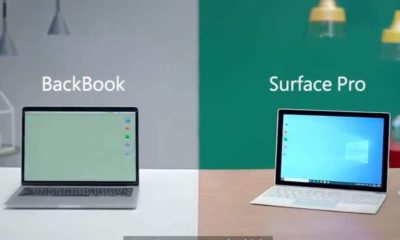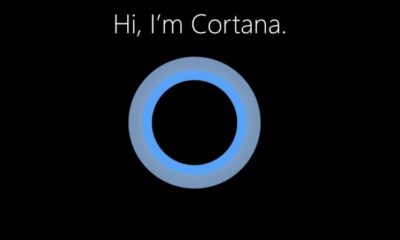Entertainment
Aiming for the ‘cloud’,Microsoft to buy LinkedIn for $26.2 bn
 San Francisco:Microsoft Corp on Monday said it is acquiring professional networking website LinkedIn for $26.2 billion in an all-cash deal, billed as one of the largest such pacts in the global social media space.
San Francisco:Microsoft Corp on Monday said it is acquiring professional networking website LinkedIn for $26.2 billion in an all-cash deal, billed as one of the largest such pacts in the global social media space.
LinkedIn, which has nearly 10 percent of its over 430 million users in India, will retain its distinct brand, culture and independence and Jeff Weiner will remain the chief executive of LinkedIn, reporting to his Indian-born Microsoft counterpart Satya Nadella, the tech giant said in a statement.
The deal, expected to close within this year, works out to over $60 per LinkedIn user.
“The LinkedIn team has grown a fantastic business centered on connecting the world’s professionals. Together, we can accelerate the growth of LinkedIn, as well as Microsoft Office 365 and Dynamics as we seek to empower every person and organisation on the planet,” Nadella said in a statement.
Microsoft will pay $196 per LinkedIn share — a 50 per cent premium to LinkedIn’s closing price on June 10. The news brought cheer for LinkedIn as shares jumped 48 per cent to $194.35 on Monday. But Microsoft shares fell nearly 3 per cent.
“Today is a re-founding moment for LinkedIn. I see incredible opportunity for our members and customers and look forward to supporting this new and combined business,” added Reid Hoffman, chairman of the board, co-founder and controlling shareholder of LinkedIn.
“I fully support this transaction and the Board’s decision to pursue it, and will vote my shares in accordance with their recommendation on it,” Hoffman added.
When it comes to users, India has been one of the fastest-growing markets for LinkedIn in the past few years.
The Mountain View, California-based LinkedIn recently opened its largest office in Asia in Bengaluru that can house over 800 employees. The company currently has nearly 650 employees in India.
“The news has actually surprised me. We have yet to see how this will bring in revenue for Microsoft other than acquiring a popular brand. Also, we have to wait for its repercussions in India where LinkedIn is gradually growing,” Vishal Tripathi, Research Director at global market consultancy firm Gartner, told IANS.
“I would expect Microsoft to exploit this opportunity by bringing its brand and offerings closer to professionals connected via LinkedIn through the power of social networking, which is bound to translate into additional sales revenues in the years to come,” said Sanjoy Sen, Doctoral Research Scholar, Aston Business School, UK.
Mark Skilton, professor at Warwick Business School, said the acquisition made sense in respect of Microsoft’s link with enterprise in its cloud platform and portfolio of business services, and added it will help the global software giant to build out its enterprise services capabilities.
“LinkedIn makes two thirds of its income from talent solutions in recruiting and job market services that define it and the remainder in selling marketing solutions and premium subscriptions. It has remained the website to go to for professional networking,” Skilton added.
LinkedIn recently launched a new version of its mobile app that has led to increased member engagement and enhanced its news feed to deliver better business insights, the company said. It also acquired a leading online learning platform Lynda.com to enter a new market and rolled out a new version of its recruiter product to its enterprise customers.
“Just as we have changed the way the world connects to opportunity, this relationship with Microsoft and the combination of their cloud and LinkedIn’s network now gives us a chance to also change the way the world works,” Weiner noted.
“For the last 13 years, we’ve been uniquely positioned to connect professionals to make them more productive and successful, and I’m looking forward to leading our team through the next chapter of our story,” he added.
Hit by a massive data breach that put nearly 167 million users’ passwords and personal information in the hands of hackers four years back, LinkedIn recently came out with an explanation and steps it has taken to protect users.
In an email sent to all its members, LinkedIn admitted that the massive data breach in 2012 may result in millions of passwords being leaked to the internet.
Entertainment
Casino Days Reveal Internal Data on Most Popular Smartphones

International online casino Casino Days has published a report sharing their internal data on what types and brands of devices are used to play on the platform by users from the South Asian region.
Such aggregate data analyses allow the operator to optimise their website for the brands and models of devices people are actually using.
The insights gained through the research also help Casino Days tailor their services based on the better understanding of their clients and their needs.
Desktops and Tablets Lose the Battle vs Mobile
The primary data samples analysed by Casino Days reveal that mobile connections dominate the market in South Asia and are responsible for a whopping 96.6% of gaming sessions, while computers and tablets have negligible shares of 2.9% and 0.5% respectively.
The authors of the study point out that historically, playing online casino was exclusively done on computers, and attribute thе major shift to mobile that has unfolded over time to the wide spread of cheaper smartphones and mobile data plans in South Asia.
“Some of the reasons behind this massive difference in device type are affordability, technical advantages, as well as cheaper and more obtainable internet plans for mobiles than those for computers,” the researchers comment.
Xiaomi and Vivo Outperform Samsung, Apple Way Down in Rankings
Chinese brands Xiaomi and Vivo were used by 21.9% and 20.79% of Casino Days players from South Asia respectively, and together with the positioned in third place with a 18.1% share South Korean brand Samsung dominate the market among real money gamers in the region.
Cupertino, California-based Apple is way down in seventh with a user share of just 2.29%, overshadowed by Chinese brands Realme (11.43%), OPPO (11.23%), and OnePlus (4.07%).
Huawei is at the very bottom of the chart with a tiny share just below the single percent mark, trailing behind mobile devices by Motorola, Google, and Infinix.
The data on actual phone usage provided by Casino Days, even though limited to the gaming parts of the population of South Asia, paints a different picture from global statistics on smartphone shipments by vendors.
Apple and Samsung have been sharing the worldwide lead for over a decade, while current regional leader Xiaomi secured their third position globally just a couple of years ago.
Striking Android Dominance among South Asian Real Money Gaming Communities
The shifted market share patterns of the world’s top smartphone brands in South Asia observed by the Casino Days research paper reveal a striking dominance of Android devices at the expense of iOS-powered phones.
On the global level, Android enjoys a comfortable lead with a sizable 68.79% share which grows to nearly 79% when we look at the whole continent of Asia. The data on South Asian real money gaming communities suggests that Android’s dominance grows even higher and is north of the 90% mark.
Among the major factors behind these figures, the authors of the study point to the relative affordability of and greater availability of Android devices in the region, especially when manufactured locally in countries like India and Vietnam.
“And, with influencers and tech reviews putting emphasis on Android devices, the choice of mobile phone brand and OS becomes easy; Android has a much wider range of products and caters to the Asian online casino market in ways that Apple can’t due to technical limitations,” the researchers add.
The far better integration achieved by Google Pay compared to its counterpart Apple Pay has also played a crucial role in shaping the existing smartphone market trends.
Content provided by Adverloom

























